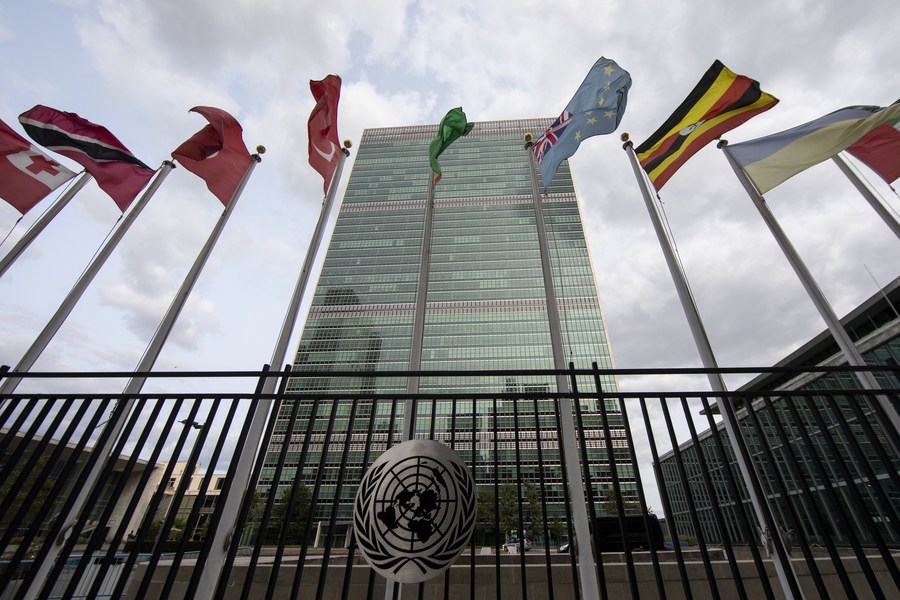An Alternative Development Initiative

Though the GDI intersects positively with other Chinese global development efforts, including the Belt and Road Initiative, it better exemplifies the sort of multilateralism that runs contrary to hegemony-seeking tactics.
We’ve reached the first anniversary of the China-led Global Development Initiative (GDI), a platform launched by China at the UN for sharing experiences, enhancing cooperation and promoting multilateral synergies for development. More than 60 countries have joined the Group of Friends of the GDI, with more than 100 countries and international organizations offering support.
The GDI was proposed on September 21 last year by Chinese President Xi Jinping at the General Debate of the 76th Session of the UN General Assembly, with the aim of supporting the development of other developing countries, promoting a global economic recovery and strengthening international development cooperation, particularly given the growing intersection of global crises—i.e., the pandemic, climate change and growing international tensions—that increasingly threaten to derail goals sought by the UN 2030 Agenda for Sustainable Development.
Related initiatives
According to the Global Development Report by the Center for International Knowledge on Development, a leading Chinese government think tank tasked with studying and exchanging with other countries development theories and practices, the principles underpinning the GDI include: prioritizing development and innovation-driven approaches; insisting no country or person should be left behind; promoting harmony between man and nature; and advancing through true multilateralism, and emphasizing openness and inclusiveness as cornerstones.
What’s most compelling about the GDI is its foundation in the UN itself, and the clear priority of supporting vital UN development goals. Though the GDI intersects positively with other Chinese global development efforts, including the Belt and Road Initiative, a China-proposed initiative that aims to boost connectivity along and beyond the ancient Silk Road routes, it better exemplifies the sort of multilateralism that runs contrary to hegemony-seeking tactics.
Additionally, the GDI advances on the world stage the Chinese principle of non-interference in the internal affairs of other countries along with China’s assertion that human rights begin with a right to subsistence. At the same time, it’s non-exclusive, it’s not bloc-building, but it does focus on vulnerable parts of the Global South—areas that have been stuck in underdeveloped states despite previous, Western-led development initiatives, as well as those that have been particularly hard hit in recent times by European dissolution and “America First” policies, including American fiscal and monetary policies that, along with U.S. trade and proxy wars, have driven inflation as well as political instability to dangerous levels.

The GDI also emphasizes green development. On the one hand, green development has suffered setbacks during the pandemic and more dramatically in Europe given struggles to address energy supply crises in the wake of the conflict in Ukraine. And the U.S. can’t decide whether it’s really for or against global efforts to fight climate change from one administration to the next, or whether it’s willing to trash cooperation on this issue while pursuing aggressive containment-oriented tactics against China via the Taiwan question especially.
China, for its part, has been a consistent signatory to international treaties like the Paris Agreement and has emerged as the global leader in renewable energy and associated technologies. Indeed, the Chinese Government has a very sober understanding of this fast emerging crisis as well as the opportunities that exist for new industries and development strategies, and this kind of thinking is in line with both sides of the win-win equation.
Additionally, some anticipate the GDI increasingly intersecting with the China-proposed Global Security Initiative (GSI), which asserts the commonsensical thesis that security is a precondition for development. China has proposed the GSI globally but more practically has started by calling for Asia to lead the way by creating better regional security, with the idea that similar cultural values can be leveraged to resolve conflicts within the region.
But what this emphasis on security as well as the other principles noted above indicate is an increasingly comprehensive program for advancing Xi’s call for building a community with a shared future for humanity, one in which people will be able to withstand pandemics, climate change, food and water insecurity, and war by emphasizing win-win solutions and cooperation over competition.
Inclusive vs. exclusive
Before 2012, that is to say, before the current generation of leadership came to power in China, the country was often criticized in international circles, especially by the U.S., for not shouldering more responsibility in global affairs. It may seem remarkable to recall such criticism now after a decade of Washington disparaging China for being more engaged, especially after the U.S. abandoned many of its commitments and fundamental responsibilities during Donald Trump’s presidency by quitting the Paris Agreement, the World Health Organization, and the Trans-Pacific Partnership, among others, while undermining the UN, the World Trade Organization, the European Union, China-U.S. relations and pandemic containment efforts.

While President Joe Biden has certainly shifted policies, it’s fair to say the U.S. returned to the sort of tactics familiar to the Cold War and its “War on Terror”—i.e., a focus on bloc-building privileging American interests above all others. In some ways, unfortunately, the new boss is the same as the old boss and the same as the old-old-boss and very little has changed—except we’re all more vulnerable than we were.
Some analysts suggest somewhat optimistically that Biden’s tactics are preferable to Trump’s—whatever America’s intentions, the U.S. is now more proactively engaged in global affairs, including turning its attention to those people and parts of the world it has historically neglected. To wit, if these new U.S.-led efforts bring more money and development to people who need both, then all the better they argue, and perhaps China deserves some credit for motivating this American about-face.
However, the various hazards associated with American approaches past and present should be clear to all, and three most especially: They promote a divisive, America-first, zero-sum, Cold War strategy; they’re big on words, short on principles, and little of actual substance—as the recent ministerial meeting of the U.S.-led Indo-Pacific Economic Framework for Prosperity revealed yet again; and the U.S. has proven itself an unreliable partner, from one election to the next, from one crisis to the next—quick to provoke conflict, quick to abandon allies on the field of battle, and barely able to sustain itself at home.
In fact, everyone knows these points are true. What some haven’t accepted yet is whether they can afford to alienate the U.S. in these difficult times—despite the latter being disproportionately to blame for many current global crises. Some also have not yet decided whether they can trust China-led initiatives, particularly those who are dependent on the U.S. for security in economic and military affairs. Hesitancy is expected; however, constancy and true multilateralism will help.
In sum, while the GDI has attracted outstanding international support in its first year, although it advances core values and principles that many recognize are necessary for survival and advancement, China will have to work harder to show the weak, the vulnerable, the frightened, the cynics and the hostages-of-hegemony that there’s a better way forward, that we can’t keep going in circles, and that we must avoid the downward spiral.
The author is a professor of politics and international relations at East China Normal University and a senior research fellow with the Institute for the Development of Socialism with Chinese Characteristics at Southeast University.
 Facebook
Facebook
 Twitter
Twitter
 Linkedin
Linkedin
 Google +
Google +










